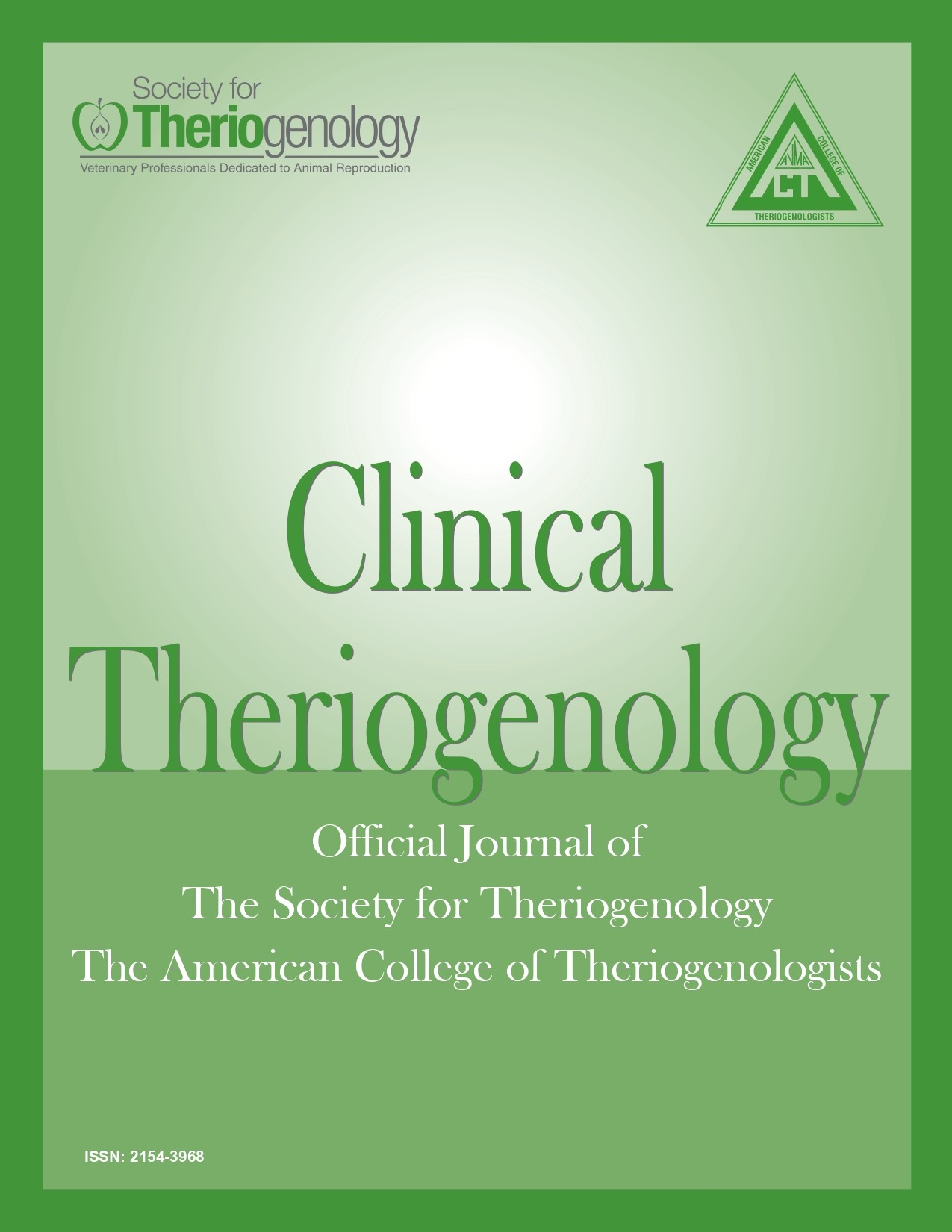Pipette or vortex are equally effective for mixing stallion sperm after cushion centrifugation
Abstract
Data on effects of mixing technique after cushion centrifugation on stallion sperm quality and longevity are limited. Objective was to compare mixing sperm via pipette or vortex after centrifugation. In Experiment 1, effects of 2 vortex speeds (minimum and maximum) and 3 vortex intervals (5, 15, and 30 seconds), and mixing (20 and 100 times) with a 1,000 μl pipette on sperm quality and sperm clumping were determined. There was no effect (p > 0.05) of treatment on total motility, progressive motility, curvilinear velocity, number of detached heads, or size of sperm clumps. There was an effect (p = 0.05) of treatment on number of sperm clumps, with fewer clumps in vortexed sample. In Experiment 2, effects of minimum vortex speed for 15 seconds, maximum vortex speed for 15 seconds and pipetting 20 times with a 1,000 μl pipette on sperm parameters and sperm clumping and at 24 and 48 hours of cooled storage were determined. There was an effect (p = 0.0001) of treatment on sperm viability (higher immediately after collection) but no difference among treatments. There was no effect (p > 0.05) of treatment on total motility, progressive motility, curvilinear velocity, number of sperm clumps, nor size of sperm clumps at 24 or 48 hours. We concluded that either a vortex or pipette can be used to mix sperm after cushion centrifugation with no detrimental effect on sperm quality or longevity.
Downloads
References

This work is licensed under a Creative Commons Attribution-NonCommercial 4.0 International License.
Authors retain copyright of their work, with first publication rights granted to Clinical Theriogenology. Read more about copyright and licensing here.





